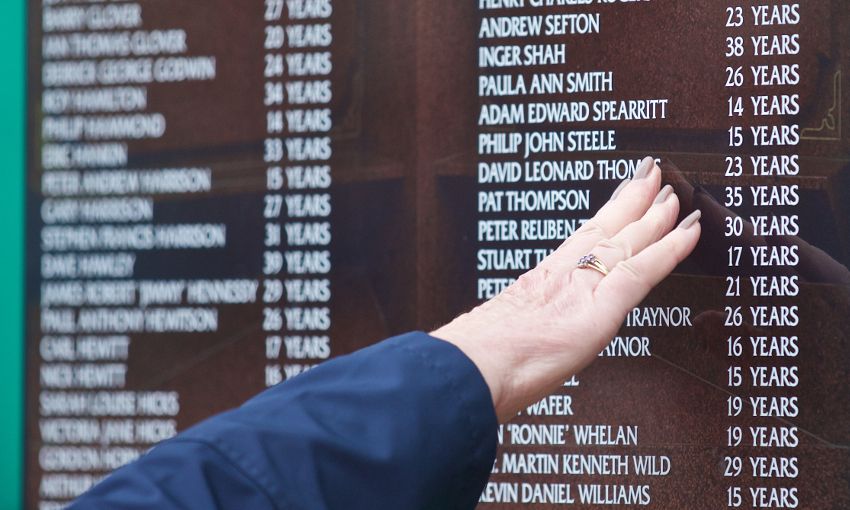Hillsborough inquests - January 29
The Hillsborough inquests commenced on March 31, 2014 and are the subject of reporting restrictions that have been imposed by the Attorney General's office. Liverpool Football Club is respectful of these restrictions and will therefore only be making available updates from other media channels for the duration of the inquest.

The report below - and the witness testimony contained within it - does not necessarily reflect the views of Liverpool FC. Please be aware that the reports on these pages will contain evidence about the day of the disaster which may be distressing.
To view archive reports from each day of the inquest hearings, click here.
Courtesy of the Liverpool Echo - January 29
The Hillsborough coroner today told the jury they would have to consider whether senior police officers knew about a tactic of closing the tunnel to the central pens.
As he continued his summing up of the case, coroner Sir John Goldring reminded the jury about evidence on closing the tunnel, which led to the pens where the fatal crush happened on April 15, 1989.
He said: “I shall go into a little detail regarding this, because you may think it important.
“One aspect you may want to bear in mind was whether tunnel closure was something known about by the more senior officers who worked at Hillsborough, also, its application at all-ticket matches, as opposed to league matches.”
The jury heard the tactic was used at the FA Cup semi-final the year before the tragedy, which was also between Liverpool and Nottingham Forest.
The coroner reminded the jury of a number of police officers who had given evidence about the tunnel being closed when the central pens of the Leppings Lane terrace were full.
They included former superintendent Michael Brookfield.
The coroner said: “When he was ground commander, he said, he would observe the pens filling up and if he considered there was a problem would communicate that to the match commander.”
Mr Brookfield said the match commander would order the tunnel to be closed if there was a danger of overcrowding in the pens.
The court heard that on the day of the match police decided to use the tactic of allowing fans to “find their own level” when they filled the pens.
The coroner told the jury: “That meant that spectators were given unrestricted access to all parts of the terrace, with the gates at the rear of the radial fences being locked in the open position.”
He added: “You will no doubt have to consider how satisfactory the ‘find your own level’ approach was.”
The court was told about previous FA Cup semi-finals held at the ground, including a 1981 match between Tottenham Hotspur and Wolverhampton Wanderers where 38 fans were injured.
Sir John said: “One matter which you may wish to consider is whether the crushing of supporters in 1981 should have informed planning for subsequent semi-finals at Hillsborough.”
The court heard that in 1989 the police operational order, drawn up to plan for the day of the match, followed the form and content of the order drawn up for the 1988 match.
He said the 1988 order had followed the order prepared for the semi-final between Leeds and Coventry in 1987.
He said: “As we go through the chronology, you no doubt will wish to consider whether or not it was appropriate for those responsible for drafting the 1989 order to follow the earlier approach.
“You may wish to bear in mind whether such issues as closing the tunnel, crushing outside the turnstiles or in the terraces, late arrival of spectators, the use of cordons and checkpoints in Leppings Lane, the monitoring of the filling of the Leppings Lane terrace or the delaying of the kick off should have been included in the 1989 order.”
He told the jury they may also wish to consider how significant problems with police radios were and whether they should have been foreseen.
And he said they might want to consider whether the approach to contingency planning was appropriate.
He took the jury through guidance on policing football, produced by the Association of Chief Police Officers (ACPO) subcommittee on hooliganism at sporting events in 1987.
The guide said that “effective turnstile policing” was “key” to prevention of disorder inside the ground and that queues at turnstiles should be monitored by police and stewards.
It also referred to grounds being compartmentalised, with each area filled in sequence.
Sir John said: “You may think that there are points of guidance of possible relevance to subsequent events in 1989 within that ACPO guidance, and if there have been departures from that guidance, that may help you in your assessment of the adequacy of preparations for the 1989 match.”
Click here to read a full transcript from January 29.



